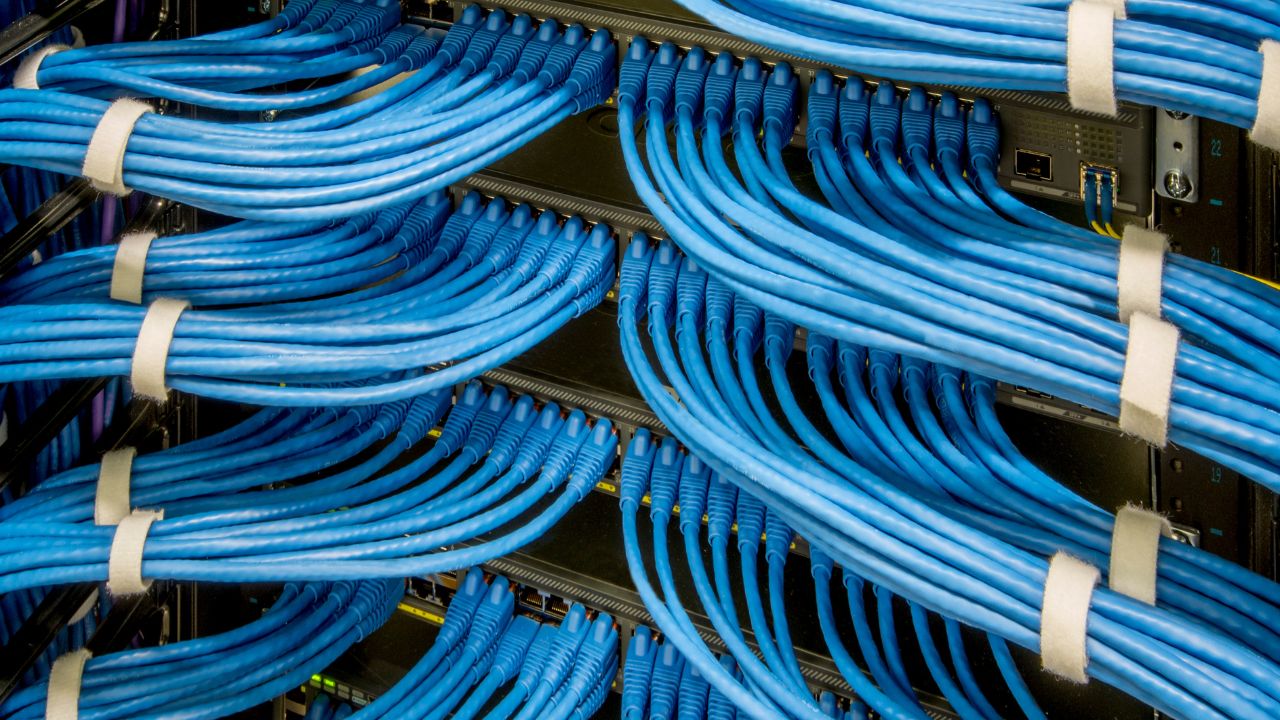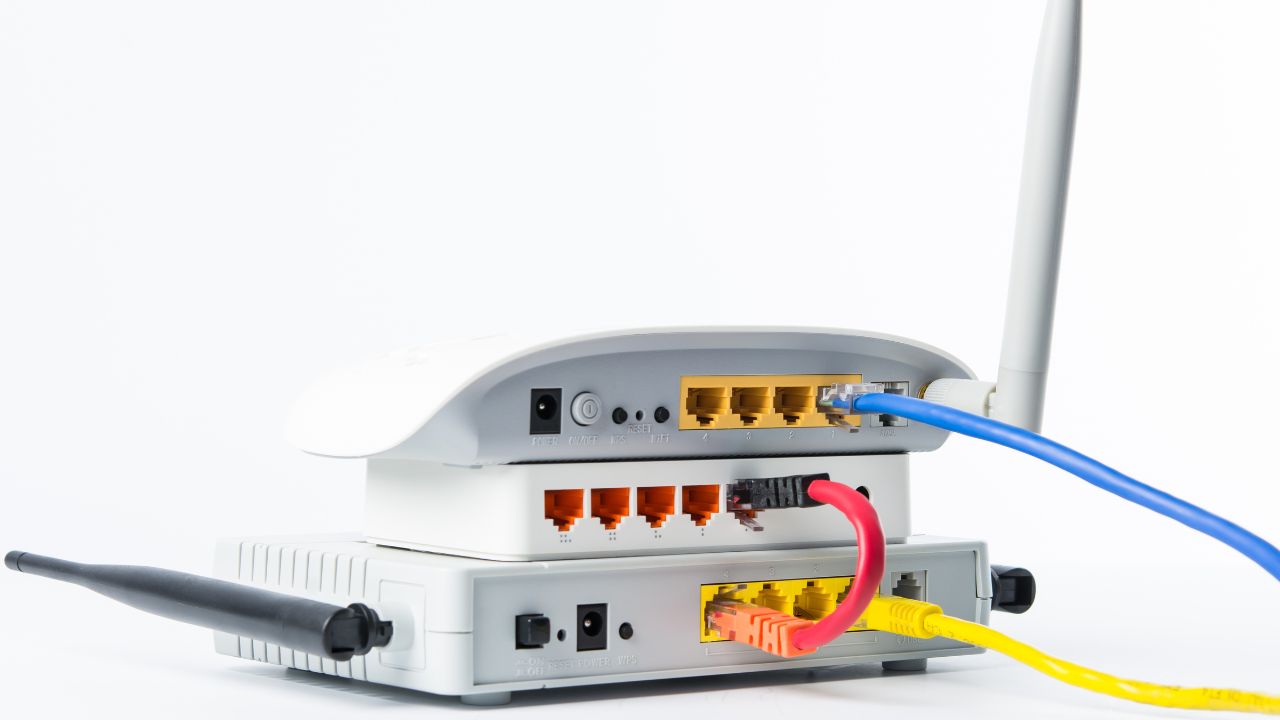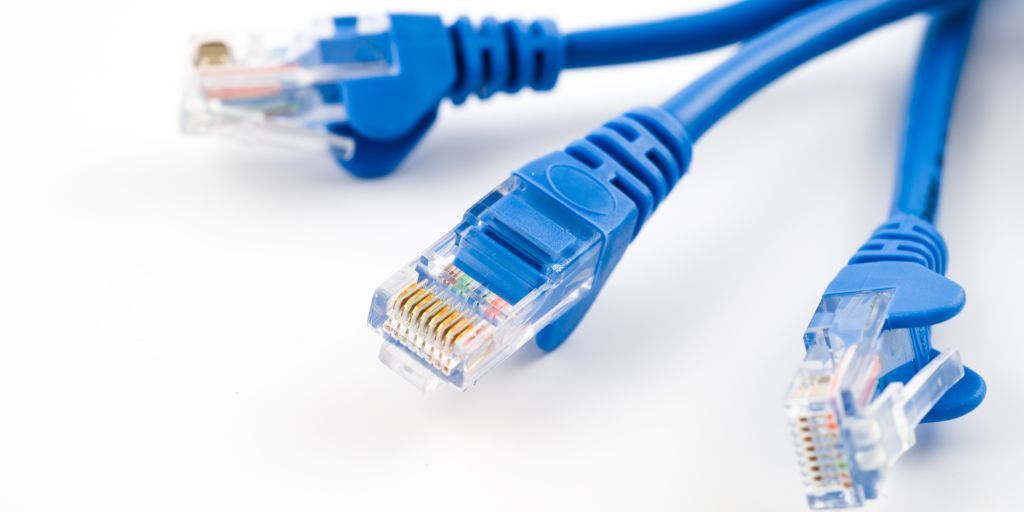Having a good network is fundamental nowadays for companies to access their work platforms quickly and securely. In a modern and efficient infrastructure, it is important to have both a wired and a wireless network, as this way you get the advantages of both systems. Below, we will talk about wired and wireless networks, what they are, their strengths and weaknesses, and how they differ.
What is a Wired Network
In a wired or cabled network, the various devices and equipment that connect to it do so through cables, which are usually Ethernet cables (though they can also be coaxial or fiber optic). The main elements of a wired network are cables and terminals, switches and hubs (to manage various access points), routers, and the network cards of the devices.

Types of Wired Networks
Depending on the type of cable used in a wired network, we can find various types:
Twisted Pair Networks
These use Ethernet cables that are classified into different categories depending on the maximum transfer speed and maximum length without loss (Cat5, Cat5e, Cat6, Cat7…).
Coaxial Networks
These networks use coaxial cable, although they are becoming obsolete due to the higher performance and capabilities of Ethernet and fiber optic cables.
Fiber Optic Networks
This type of cable offers much higher transfer speeds and can cover greater distances without signal loss.
Advantages of Wired Networks
Wired networks offer many interesting benefits, among which we can highlight:
- The data transmission speed in this type of network is very high, achieving maximum performance when working on the network.
- Since a physical connection is required to access the network, security is greater than in wireless networks, where access is remote.
- Connection stability is another strong point of this type of network (minimum latency time, for example).
- Easy management once installed, having precise control over all the devices and equipment that connect.
Disadvantages of Wired Networks
Among the disadvantages of wired networks, we have:
- The installation and maintenance cost is high due to the need for physical installation (network cables, terminals, network outlets, switches, patch panels, hubs…).
- Workspaces have greater limitations as they need a cable to connect to the network.
- Greater difficulty in initial installation due to the need to cable all outlets and centralize them at a point.
- Adding new connection points is also more complex and costly compared to wireless networks (difficulty in scaling).
What is a Wireless Network
In a wireless network, connection and communication are done remotely without the need for physical cables. This type of network is very interesting because it allows great versatility when connecting mobile devices, as well as providing cleaner spaces and less difficulty during installation.
The main characteristics of wireless networks are mobility or portability, scalability, and flexibility when installing them in areas where physical cabling is unfeasible or very costly.

Types of Wireless Networks
Wireless networks can be classified into the following types:
Wireless Local Area Network (WLAN)
The WLAN uses WiFi technology to connect devices within a limited area, such as a store or office building, for example.
Wireless Personal Area Network (WPAN)
In a WPAN, devices connect within a very small area through technologies such as Bluetooth or infrared.
Wireless Metropolitan Area Network (WMAN)
A WMAN is designed to connect several points within a city or metropolitan area.
Wireless Wide Area Network (WWAN)
WWANs cover large areas, such as cities or even regions (some technologies typical of these networks are LTE and 5G).
Advantages of Wireless Networks
Among the most notable benefits of wireless networks, we can mention:
- Ease of installation as all data is transmitted wirelessly, eliminating the need to set up a physical infrastructure with cables, switches, and hubs.
- Cost reduction by not having to invest in cabling, which, depending on the type of installation, can be very expensive.
- Greater flexibility when connecting mobile devices such as tablets, mobile phones, wireless IP cameras, laptops, etc.
- Achieving a cleaner space free of obstacles by avoiding network connection cables.
Disadvantages of Wireless Networks
Despite all the advantages offered by this type of network, there are also some “cons” that are important to know:
- Higher security risks since a physical connection is not needed to access the network (they are more exposed to external attacks by using a remote access system).
- Although wireless networks are increasingly faster with technological advancements, their transfer speed is still lower compared to wired networks.
- The coverage of these networks depends on elements like walls and other objects that can block the signal.
- The stability and latency of the signal are not as consistent as in wired networks.
Differences Between Wired and Wireless Networks
When comparing these types of networks, we can differentiate three important aspects where the difference is evident:
- Wired networks offer a higher level of security against external attacks since physical access is required, whereas wireless networks can be accessed remotely via the web (accessing the router’s configuration, for example).
- When installing these types of networks, wireless networks are less costly and much simpler, as there is no need to invest in cabling and other physical elements or even face potential construction works.
- The transfer speed and signal stability in wired networks are guaranteed, whereas in wireless networks, speed is usually lower, and stability depends on many factors.
A good IT infrastructure should have both wired and wireless networks to provide the company with an efficient communication environment that allows it to make the most of both alternatives.
At Microsegur, we are specialists in advanced security solutions for companies, offering specialized services to maximize the protection level of your wired and wireless networks. Do not hesitate to contact us to receive personalized attention to your business or project’s needs.



